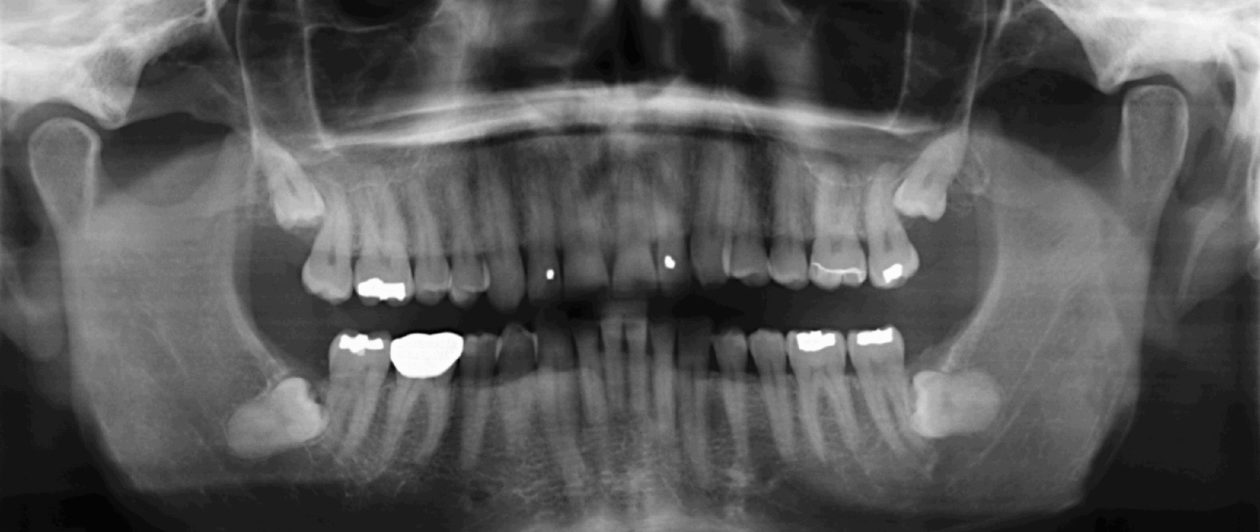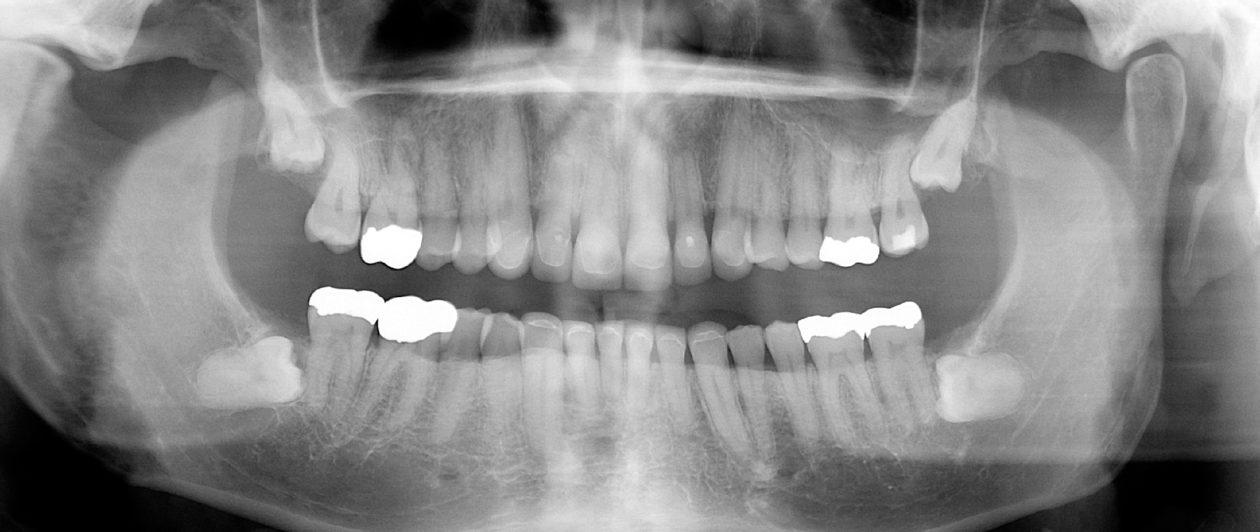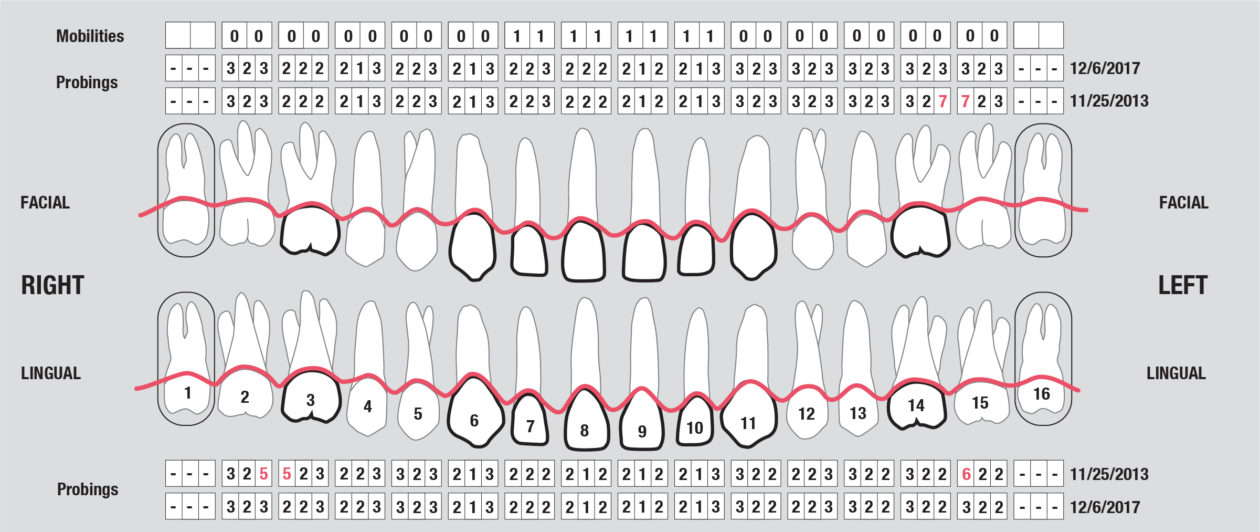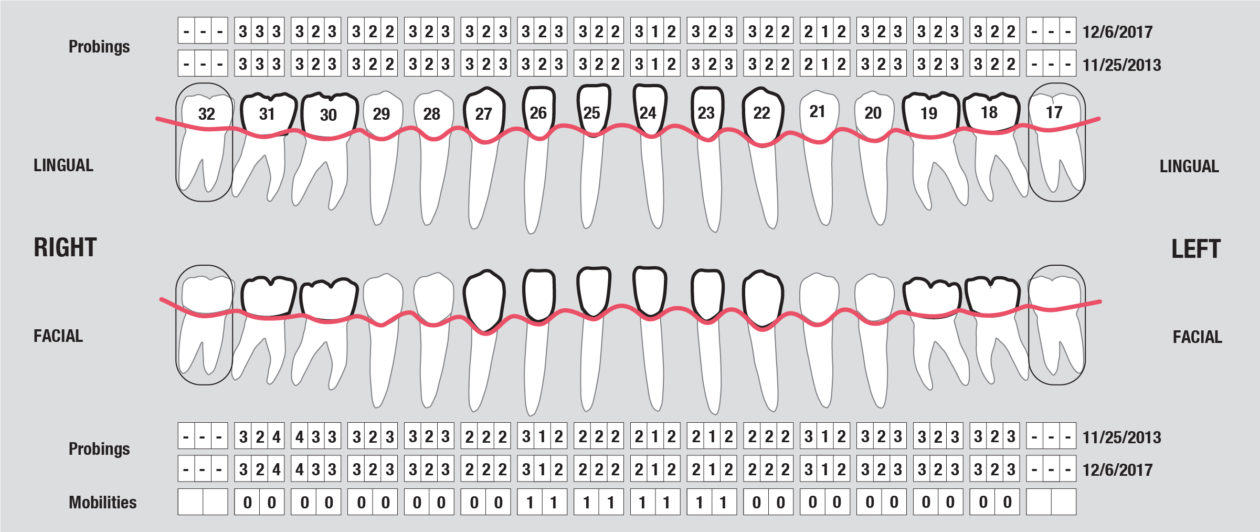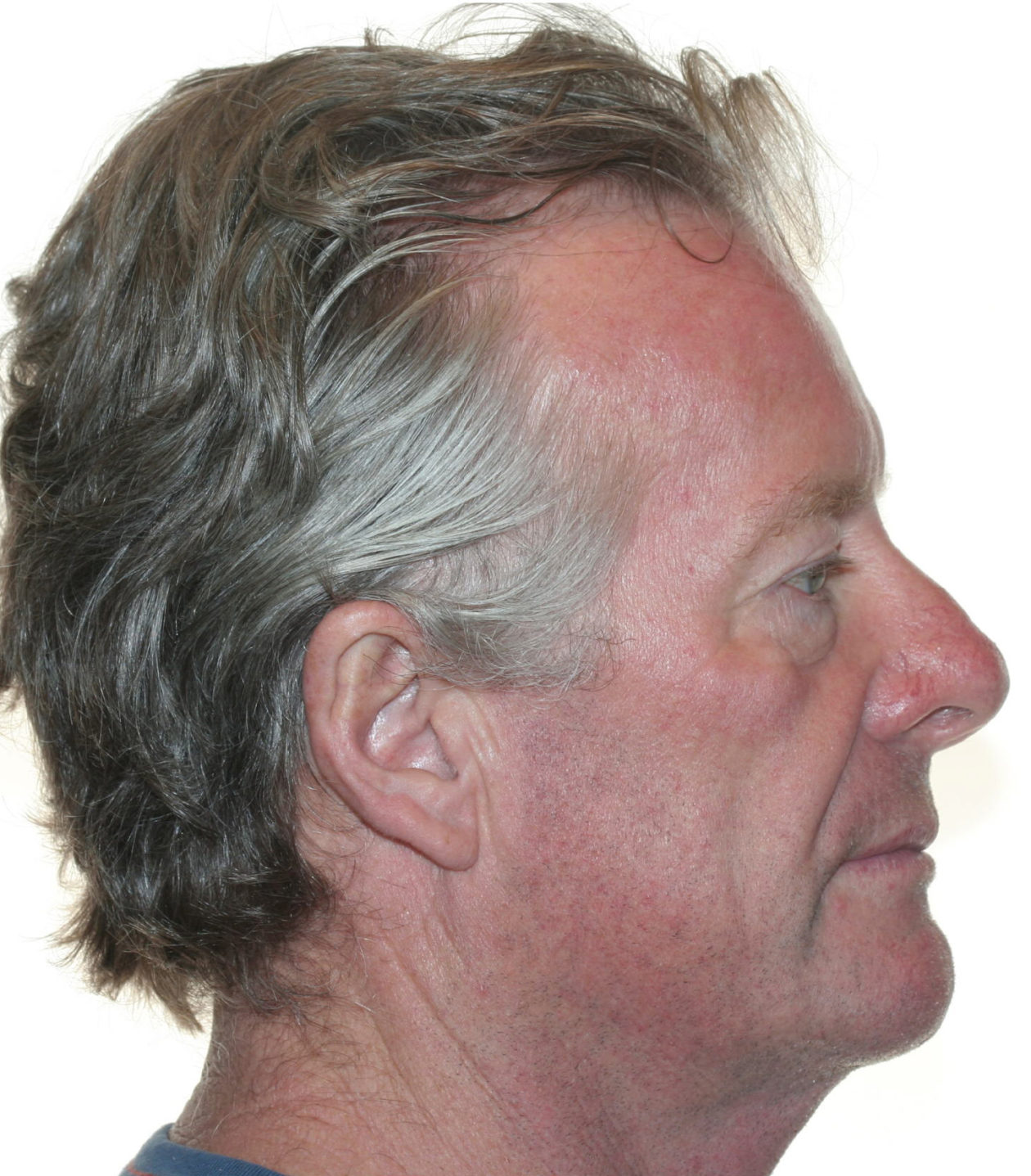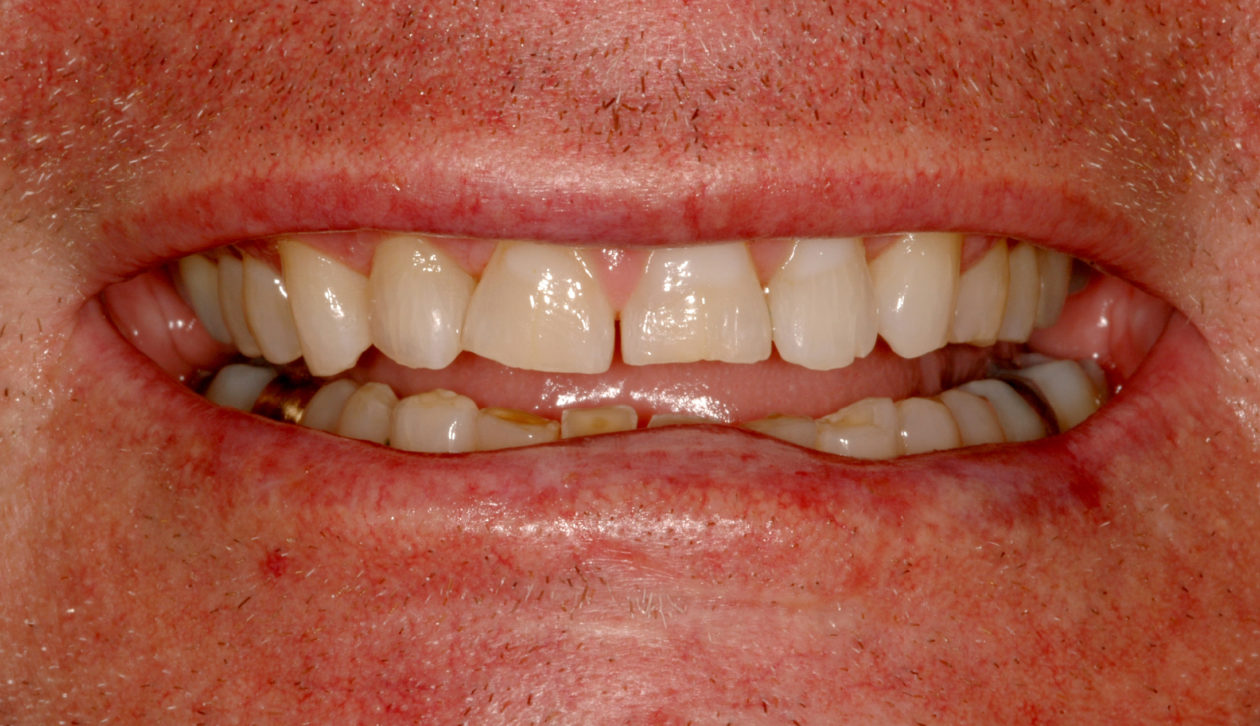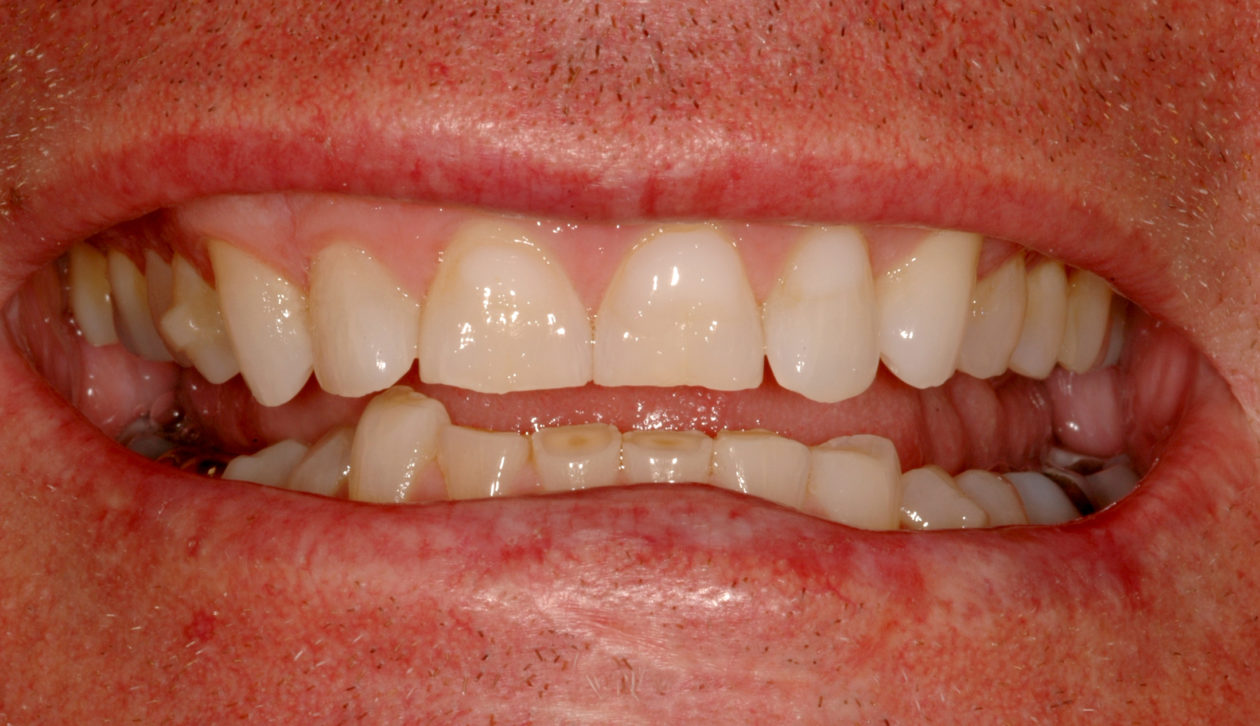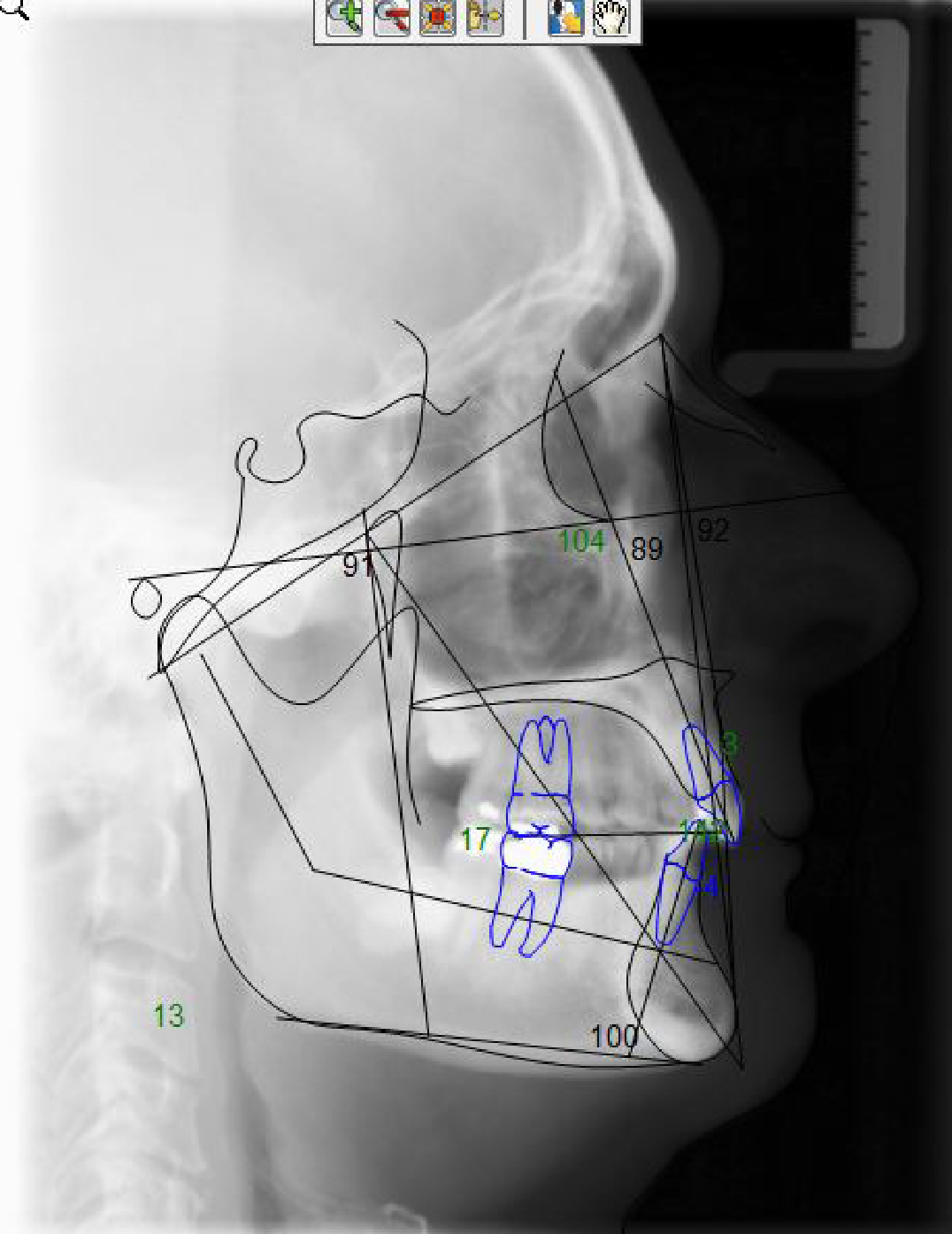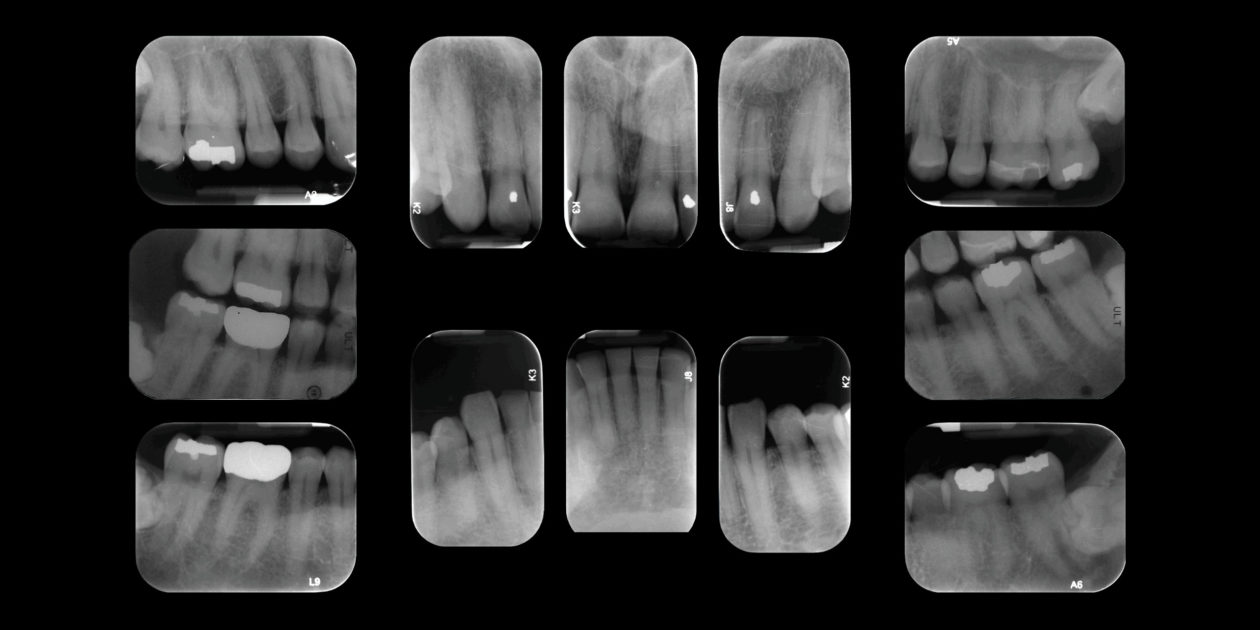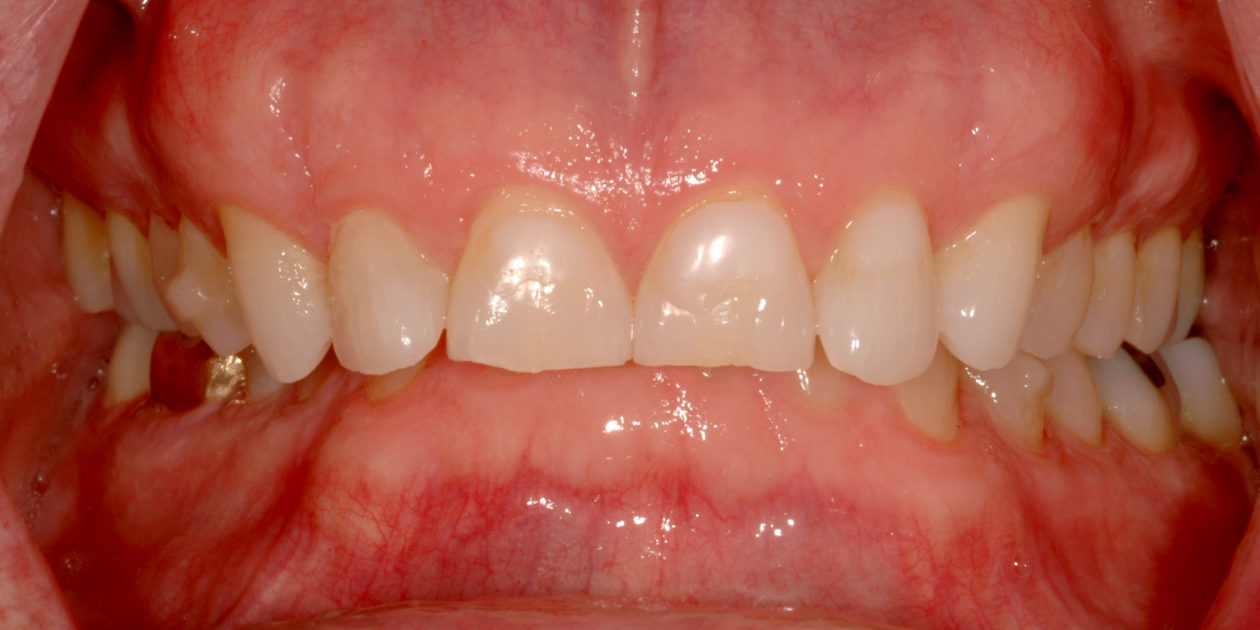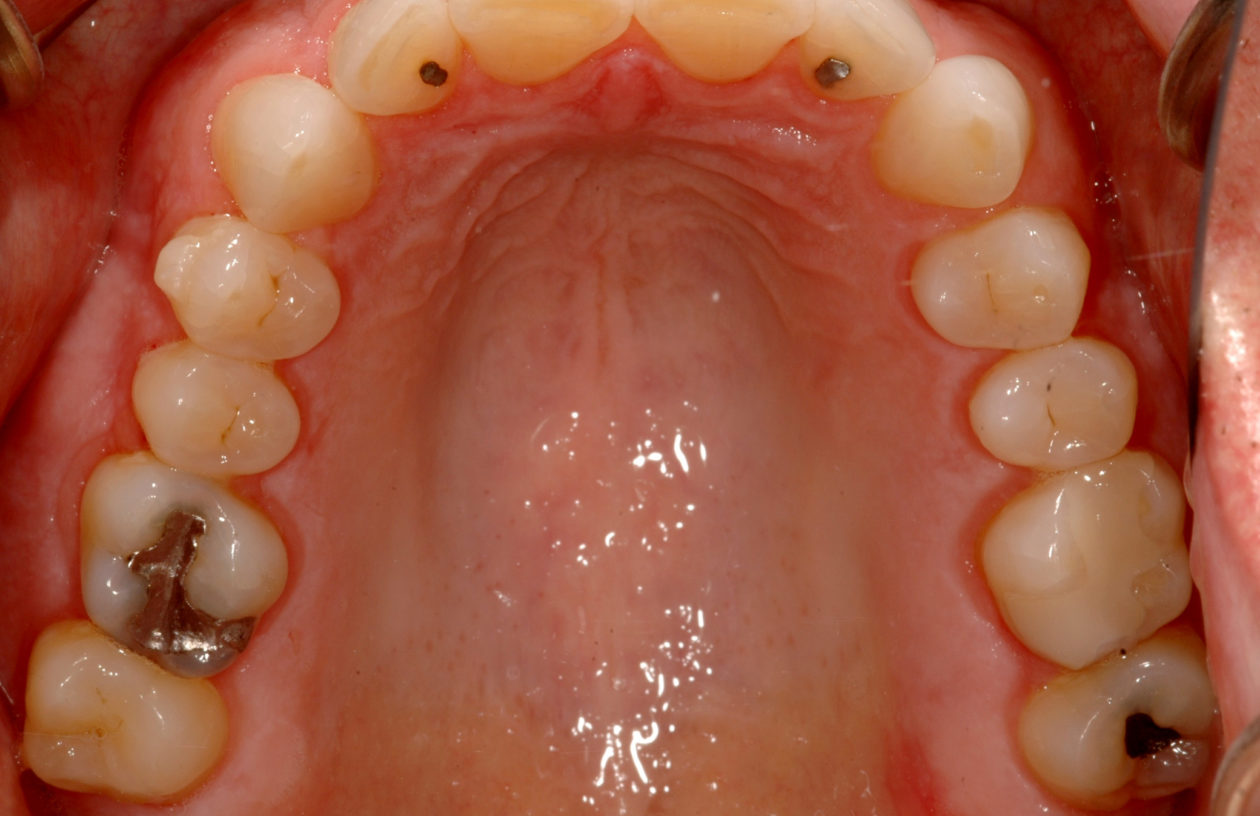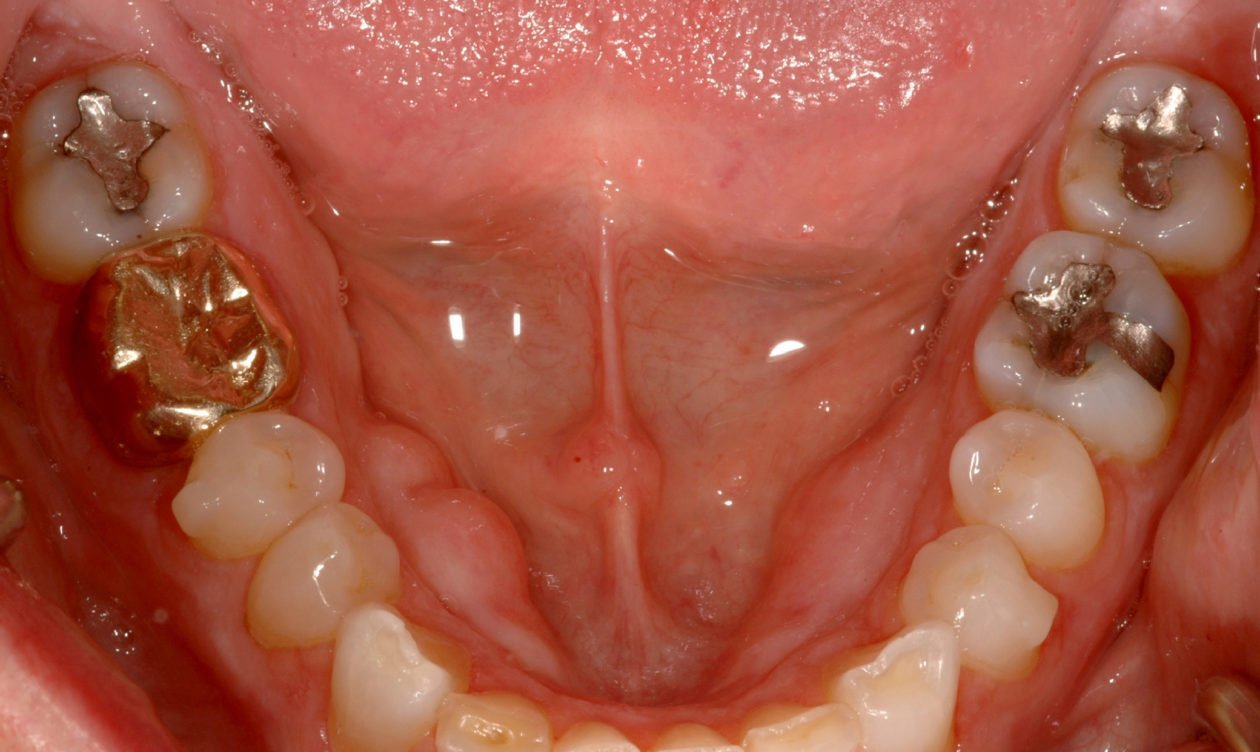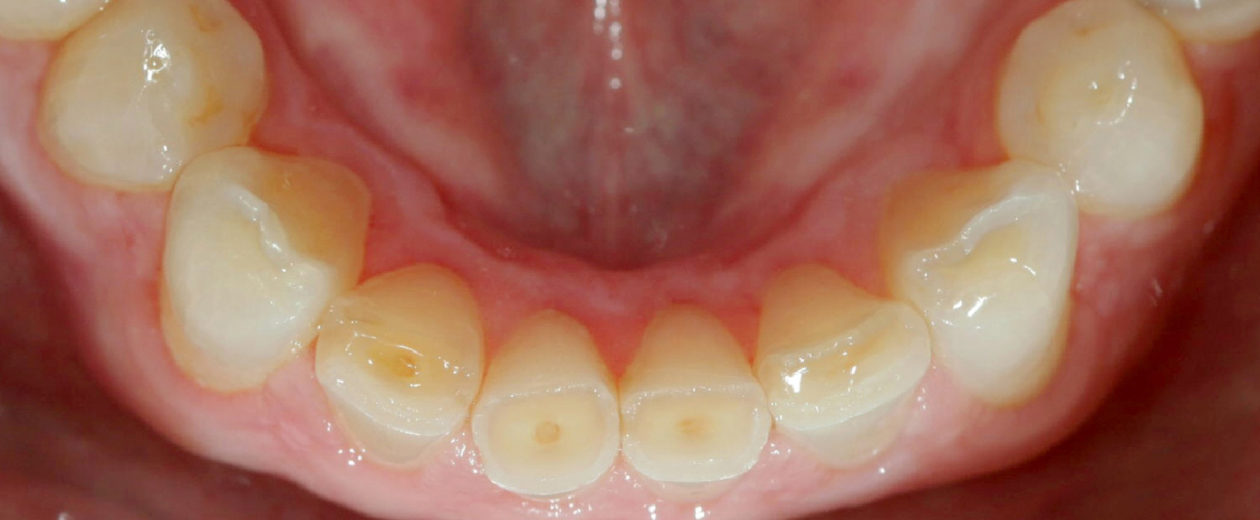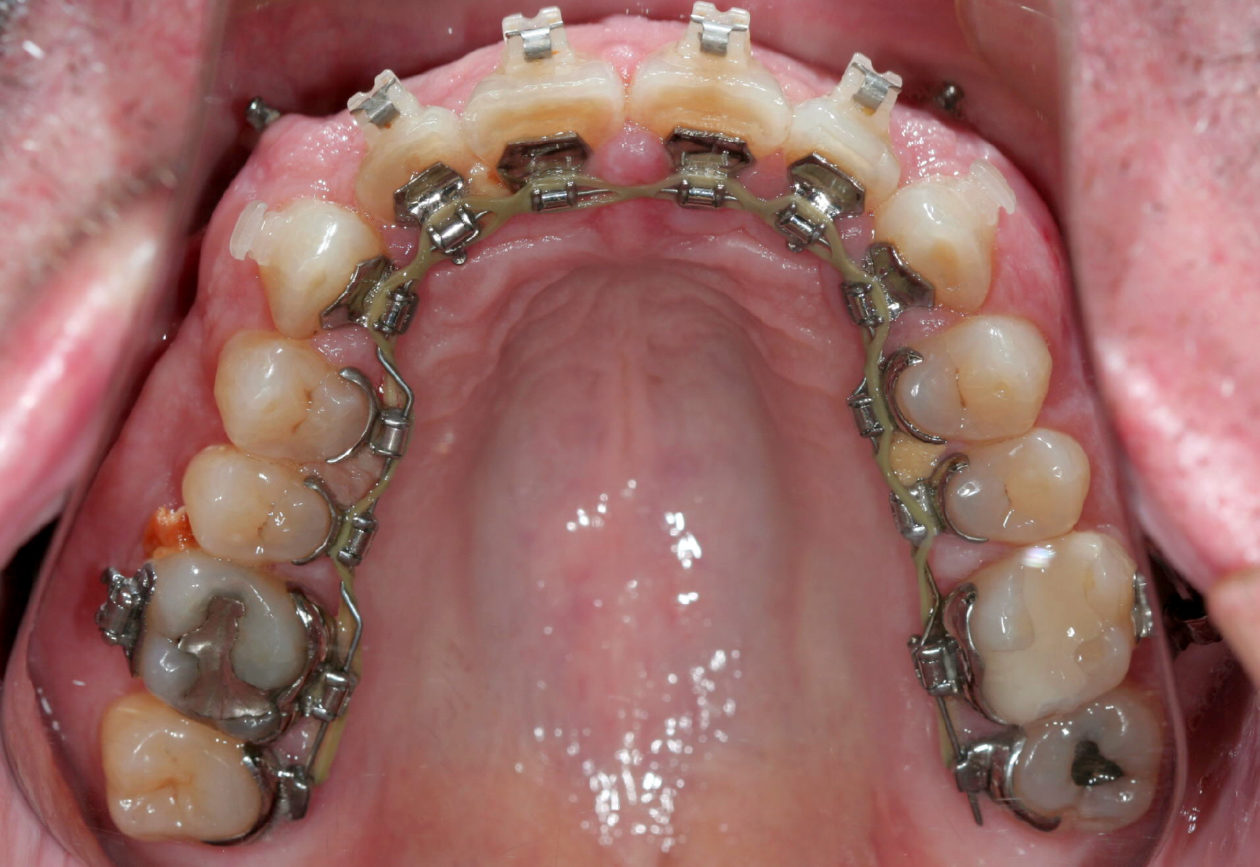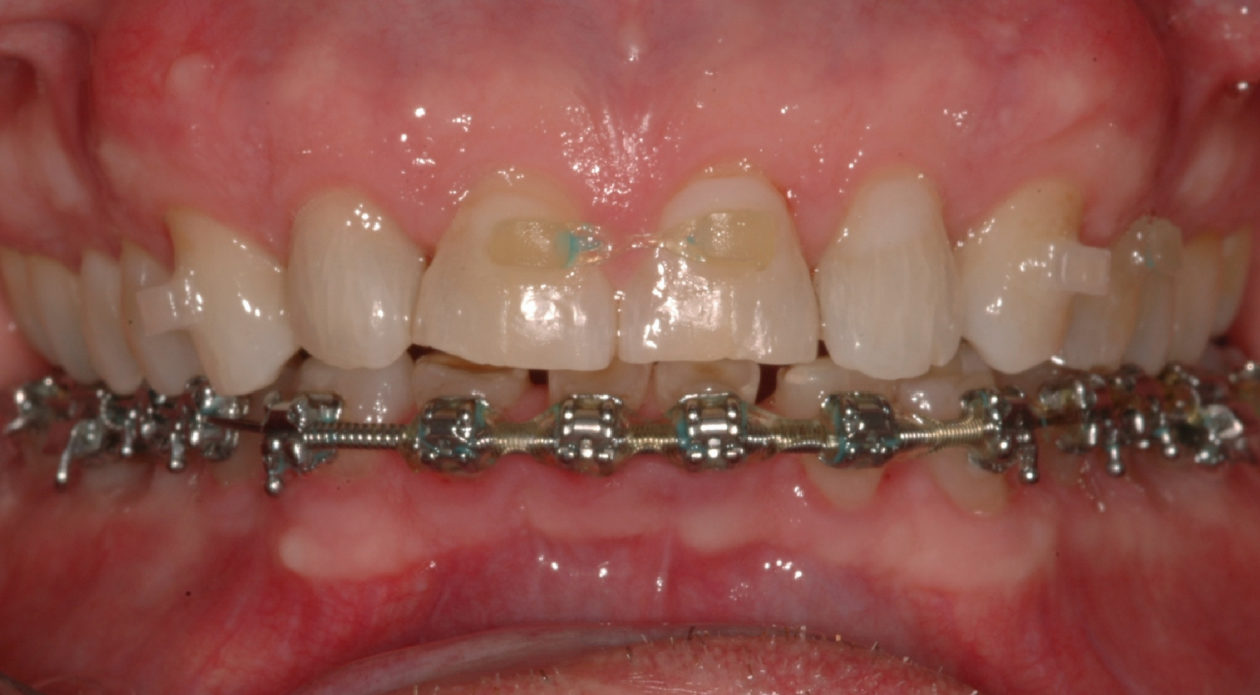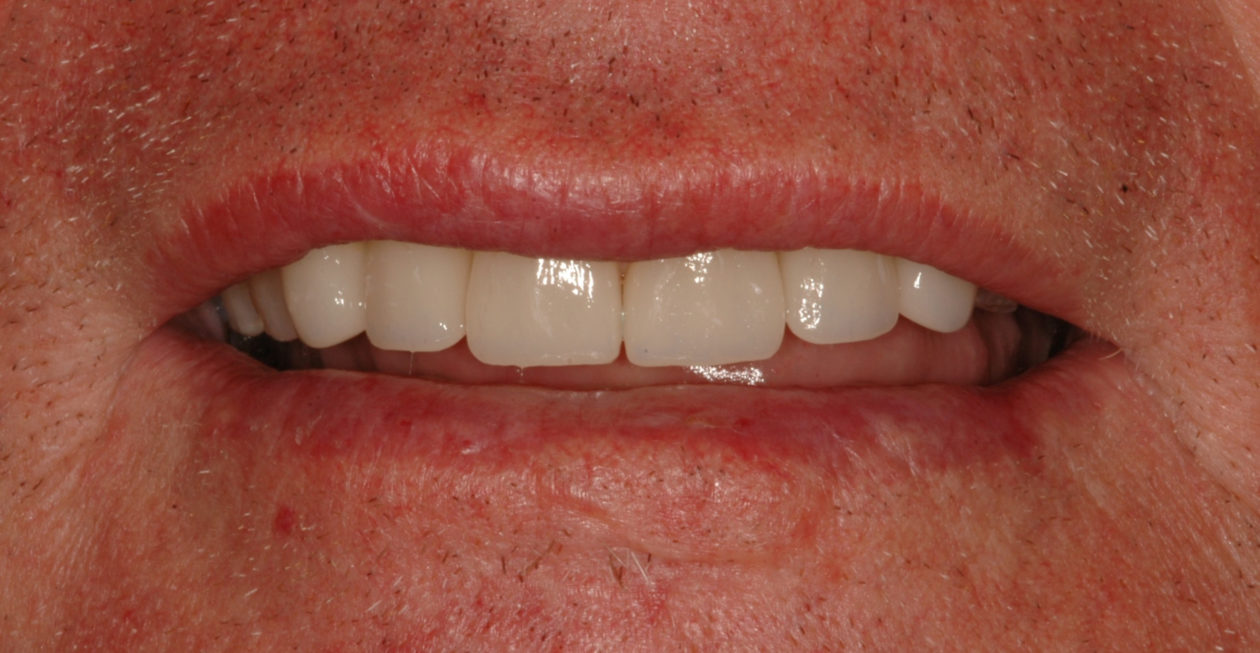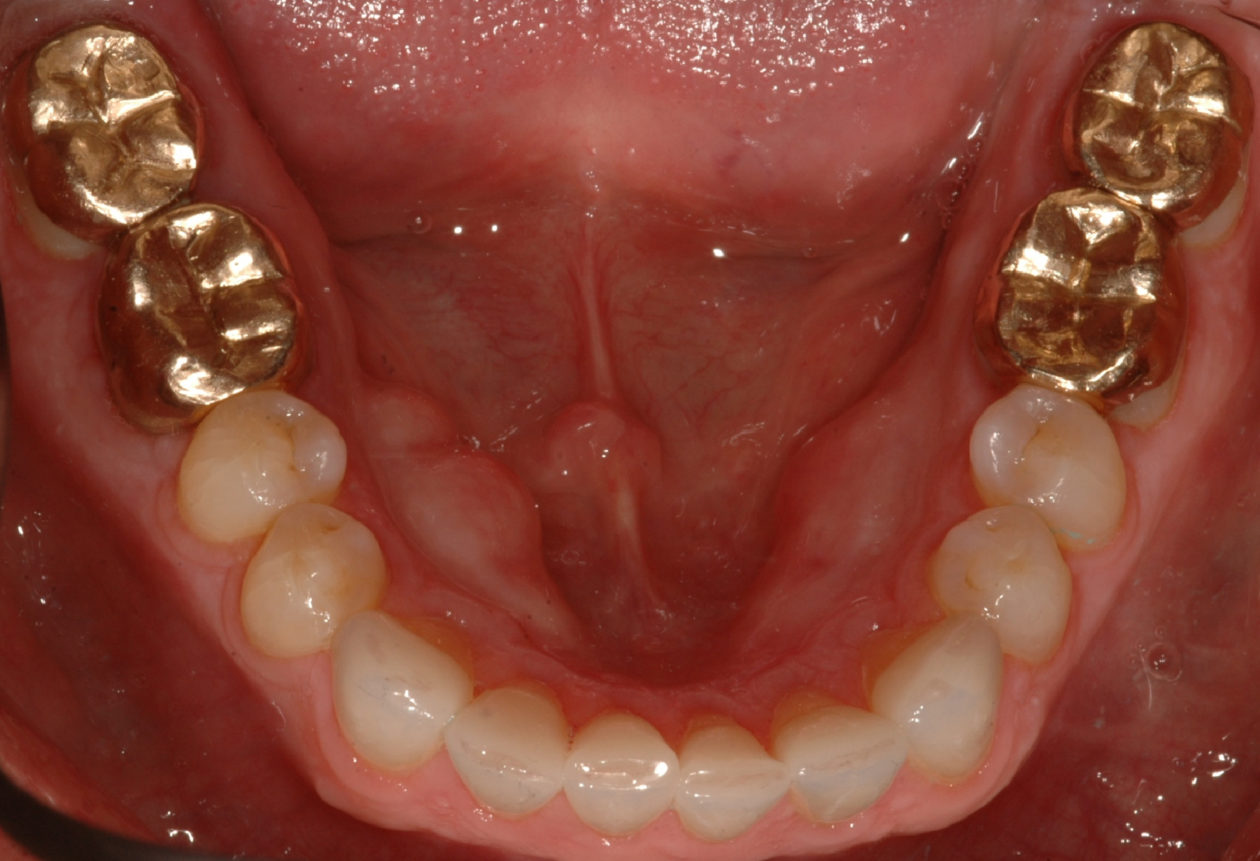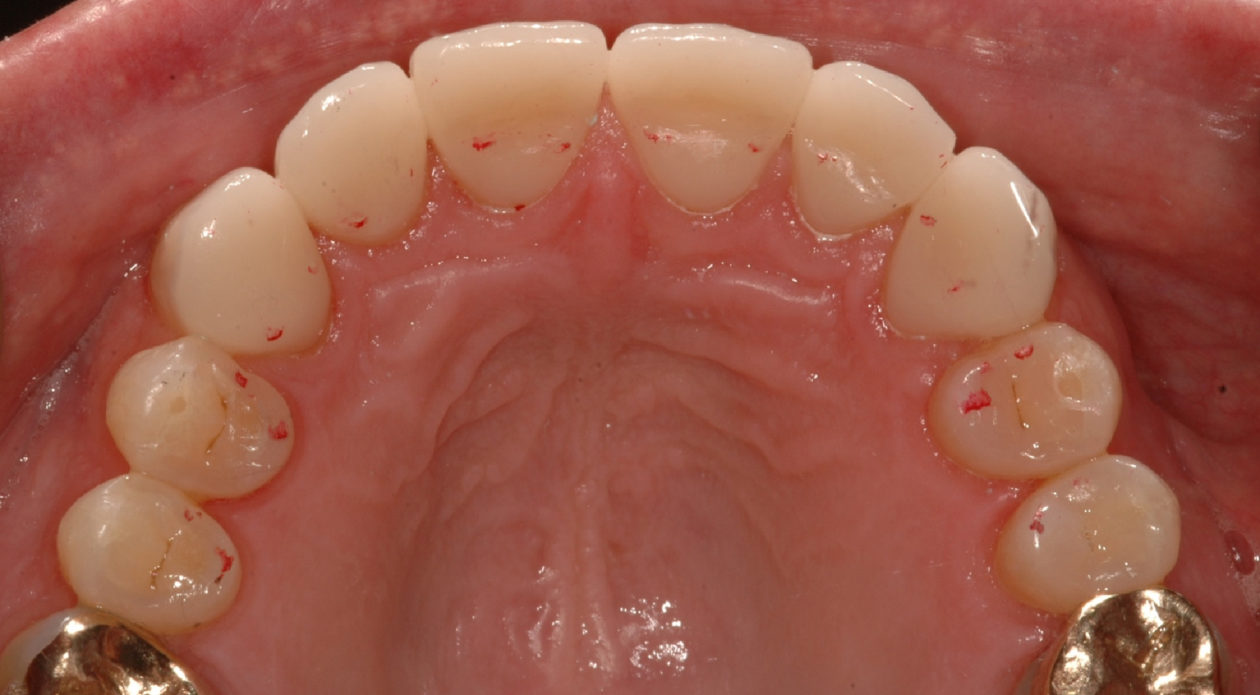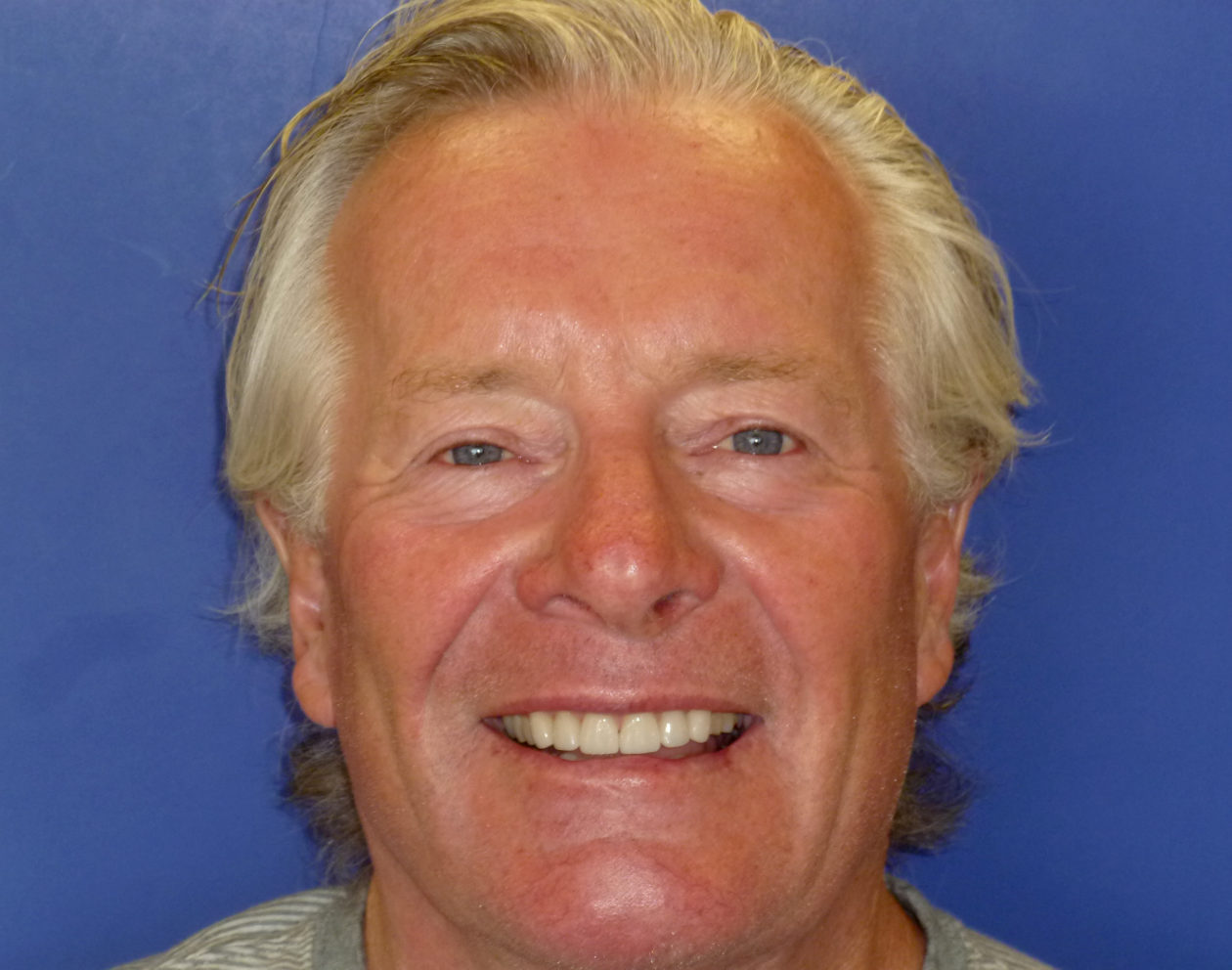Review of Treatment Goals
It was clear that a treatment plan that did not include excessive amounts of restorative dentistry would necessitate orthodontics. The question was whether the patient would accept and complete a third round of orthodontic treatment.
Phase I: Diagnostic Workup
- Diagnostic casts, centric relation and protrusive records, facebow transfer, clinical and periodontal charting, intraoral and panoramic radiographs and photos were obtained.
- An interdisciplinary treatment planning consult between prosthodontic and orthodontic specialists was completed.
Phase II: Treatment Presentation
Our discussions with the patient about possible treatment plans were made easier with the mounted models which clearly showed the complete vertical overlap of the anterior teeth and the lack of room to restore his worn lower front teeth (his primary concern) to their normal size and shape. We discussed how his general dentist’s treatment plan of “opening the bite and crowning all the teeth” was a valid plan. When we “opened the bite” on the articulator it was easy to show the patient why that would mean having to crown all the teeth. After looking at the photos of his minimally damaged posterior teeth (including nine virgin teeth) and realizing all those teeth would need crowns for primarily occlusal reasons, the patient asked if there were any other possible plans. At this point we presented the orthodontic option of moving the teeth into their proper positions rather than restoring them. When the patient understood that his previous attempts at orthodontic treatment were esthetically driven and that our proposed plan was occlusion, longevity, tooth structure preservation, and health driven, he readily agreed to the plan.
Phase III: Periodontal Therapy
Several hygiene appointments including deep scalings were completed to establish gingival health and idealize plaque control habits. Once the patient understood the importance of maintaining ideal plaque control and how difficult the orthodontic appliances would make that, he maintained a monthly recall for the entire 3+ years of the orthodontic treatment.
Phase IV: Orthodontic Therapy
The goals of orthodontic therapy were to correct tooth no. 28 complete lingual crossbite, intrude all the maxillary and mandibular anterior teeth to properly align the CEJs and gingival tissues, and to extrude the posterior teeth to create restorative space with only minimal change in the vertical dimension. The objective was also to shallow the anterior guidance and correct the Class II occlusion to as close to Class I as possible. Finally, horizontal alignment of the anterior teeth was addressed so future restorative treatment could create normal centric stops on the maxillary cingula.
Treatment started with self-ligating lingual brackets on the maxillary arch and self-ligating facial brackets on the mandibular arch. Bite Turbos were placed on the posterior teeth while intruding the incisors, then were gradually removed to allow extrusion of the posterior teeth as the anterior teeth intruded.
Temporary anchorage devices were placed palatally between teeth nos. 6, 7 and 10, 11, and facially between teeth nos. 22, 23 and 26, 27 so that elastic chains could help intrude the anteriors.
Buccal tubes were added on teeth nos. 3 and 4 and clear facial self-ligating brackets were added on teeth nos. 7–10 so that maxillary utility wires could intrude teeth nos. 7–10 while controlling the root torque and keeping the roots centered in the bone.


